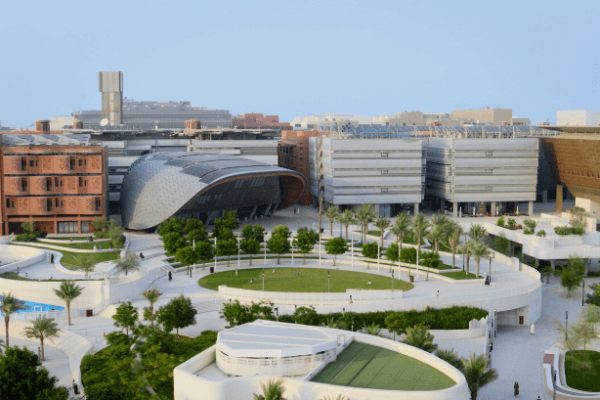- ‘Build Solutions that Address Real Market Needs’
- Employee Happiness Awards UAE 2025: Honouring People-First Workplaces
- Why Customer Experience is the Cornerstone of Any Successful Business
- Toronto Breaks Ground on Net-Zero Community Centre in North York
- Chinese Livestreamers Rake in $7.65m After Using Interactive Digital Avatar
Category: Thought Leadership
As the climate crisis deepens, businesses are under increasing pressure to adopt sustainable practices, and the world’s oceans have emerged as a critical frontier for innovation and climate mitigation. Research suggests that the ocean could contribute up to 21% of the emission reductions required by 2050 to meet the Paris Agreement’s 1.5°C target—a reduction equivalent to closing all global coal plants. This urgency has given rise to a phenomenon known as “blue acceleration,” where industries such as offshore wind energy, sustainable fisheries, and eco-tourism are expanding at an unprecedented rate, often outpacing more traditional economic sectors.
The Rise of the Blue Economy
The concept of the blue economy, defined by the World Bank, refers to the sustainable utilization of ocean resources to drive economic growth, generate employment, and preserve marine ecosystems. One of the most significant developments in this space is the emergence of the Ocean 100, a group of transnational corporations that collectively dominate 60% of ocean-related revenues, amounting to $1.1 trillion in 2018. These “keystone actors”—spanning industries such as energy, shipping, and tourism—are increasingly collaborating through initiatives like the Ocean 100 Dialogues, which aim to foster sustainability, mirroring the ecological role of keystone species in natural ecosystems.
Technological innovation has been a key driver of this transformation. Solutions such as LED fishing nets, developed by companies like SafetyNet Technologies, have effectively reduced bycatch by up to 90%, addressing overfishing concerns while simultaneously lowering fuel costs and mitigating regulatory risks. Similarly, institutions like UC Santa Barbara have pioneered whale detection systems that provide real-time alerts to ships, helping to reduce collisions and cut emissions. In just six months, such initiatives have reduced 17,000 metric tons of CO₂ emissions by encouraging slower vessel speeds.
Marine-Based Corporate Social Responsibility in Business Models
A growing number of businesses are embedding ocean conservation into their core strategies, recognizing both the ecological and economic benefits of such efforts. Many corporations fund large-scale restoration projects, such as mangrove replanting and coral reef rehabilitation, which enhance biodiversity while serving as vital carbon sinks. Patagonia, for instance, actively supports marine protected areas as part of its commitment to environmental sustainability, reinforcing its eco-conscious brand identity.
The seafood industry, too, has embraced change by investing in circular supply chains. Organizations like SeaBOS are leveraging traceability technologies to combat illegal fishing and reduce waste, addressing a global problem that sees approximately 9.1 million tons of fish discarded annually, according to the United Nations. Meanwhile, the energy sector is making significant strides in offshore wind farm development, with projects like Ørsted’s installations in the North Sea now powering millions of homes while minimizing ecological disruption.
Economic Imperatives and Risks
The economic significance of ocean-based industries cannot be overstated. The Suez Canal crisis underscored the indispensable role of marine transport in global trade, with 76% of U.S. trade relying on ocean routes and contributing $282 billion annually to the economy. Such disruptions highlight the need for resilient, low-impact shipping practices to sustain economic stability while reducing environmental harm.
Consumer behavior is also shifting in favor of sustainability. A 2024 McKinsey report found that 66% of global consumers prefer environmentally responsible brands, even when faced with premium pricing. This trend has enabled companies such as Allbirds, which utilizes algae-based foam in its products, to introduce sustainable innovations without compromising profitability.
Challenges and Collaborative Solutions
Despite these advancements, businesses face mounting regulatory pressures to ensure their operations do not harm marine ecosystems. The European Union’s Corporate Sustainability Reporting Directive (CSRD) now mandates ocean-impact disclosures, compelling firms to scrutinize their supply chains for overfishing and pollution-related concerns.
Public-private partnerships have become essential to navigating these challenges. The UN Decade of Ocean Science has spurred collaborations such as the Friends of Ocean Action, which unites corporations, NGOs, and scientific communities to drive large-scale solutions. These efforts have led to tangible progress, including the development of plastic-free packaging and investments in green port infrastructure that lower carbon footprints.
The Path Forward
As both a climate ally and an economic engine, the ocean necessitates systemic change in corporate responsibility. Large enterprises, particularly those within the Ocean 100, must wield their influence to accelerate the decarbonization of shipping, as demonstrated by Maersk’s investment in methanol-powered vessels. At the same time, promoting blue carbon initiatives—such as seagrass and mangrove restoration—can play a crucial role in climate mitigation.
Equally vital is the engagement of small businesses in this transition. From eco-tourism ventures to sustainable aquaculture startups, these enterprises are the backbone of local economies and biodiversity preservation. Their participation in the blue economy can drive grassroots-level change while complementing the efforts of larger corporations.
As Henrik Österblom of the Stockholm Resilience Centre aptly puts it, “The ocean is not just a victim—it’s a partner. Businesses that protect it today will thrive tomorrow.” The intersection of business and ocean conservation represents not only an economic opportunity but also a moral imperative that will define future generations’ sustainability.
In the ever-evolving world of finance, few phenomena have captivated public attention and challenged conventional wisdom quite like the meteoric rise of meme stocks. This unorthodox corner of the market,...
The stadium erupted when Virat Kohli secured his 51st ODI century against Pakistan this Sunday, 23rd February, but the real magic wasn’t in the celebration. It was in the method: a thesis on dominating...
In a year when advertising spots commanded an eye-watering $8 million for just 30 seconds of airtime, Super Bowl LIX’s commercial breaks became a showcase of creative ambition. From heartwarming...
The construction industry in the Middle East is rapidly expanding, driven by government investments, increasing populations, and efforts to diversify economies. In Saudi Arabia, Vision 2030 is driving...
If you remember one thing from this article, it’s this: “Know thyself.” – Socrates. The importance of self-awareness and authenticity as the foundation of true leadership is a principle that has...
The real estate landscape is rapidly changing, influenced by technological innovation, societal shifts, and the evolving priorities of a new generation of property seekers. This change follows a quiet...
Change is the only constant in life, and nowhere is this truer than in the dynamic realm of leadership. In the fast-paced world we navigate today, the ability to adapt is not just a skill; it’s a...
Rusmin Lawin, a distinguished global entrepreneur and real estate leader with over 25 years of industry experience, serves as the President of FIABCI Asia Pacific and a board member of FIABCI...
The working environment is undergoing a major transformation, yet the essentials of successful leadership are still relevant, writes Manish. The traditional workplace environment has been changing over...
















